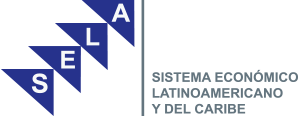OECD INDICATORS POINT TO GROWTH PICKUP
10 junio 2013
Fuente: Published by 4-Traders.com, France
Fuente: Published by 4-Traders.com, France
Paris, June 10- Growth rates in some parts of the global economy are set to pick up in the months ahead, but only to a moderate extent, while Russia is set to experience a slowdown, according to the Organization for Economic Cooperation and Development's composite leading indicators.
Released Monday, the composite leading indicators for April continued to point to a pickup in growth in the U.S. and Japan. They also suggest that the euro zone -long the weakest link in the global economy- is set to return to growth later this year, with Germany leading the way.
But the leading indicators for a number of developing economies indicate that growth will remain around the trend rate and is not set for a significant pickup.
A reading of 100.00 for a leading indicator means economic growth is set to be at the trend rate, which itself varies widely among large economies. China's trend rate of growth is much higher than Germany's, for example.
The Paris-based think tank said its leading indicator of economic activity in its 34 developed-country members rose to 100.6 in April from 100.5 in March.
"Composite leading indicators point to moderate improvements in growth in most major economies," the OECD said.
It said the leading indicator for the euro zone rose to 100.1 from 100.0 in March.
A return to growth in the euro zone would be welcomed by policy makers in other parts of the world. The currency area is in the throes of its longest post-war contraction, and the European Central Bank last week cut its growth forecast for this year, partly because of its disappointing performance in the first five months.
The OECD's leading indicators are designed to provide early signals of turning points between the expansion and slowdown of economic activity, and are based on a wide variety of data series that have a history of signaling changes in economic activity.
As such, they do not incorporate a judgement by the OECD's economists about what is likely or may happen in the future. Last month, the OECD cut its growth forecasts for developed economies, and now expects the combined gross domestic product of its 34 members to increase by 1.2% this year, down from 1.4% in 2012.
The leading indicators for China, India, and Brazil were unchanged, and all slightly below 100.0. By contrast, the leading indicator for Russia fell to 98.5 from 99.1, an indication that "growth is losing momentum," according to the OECD.
Falling demand for and prices of commodities produced by Russia are hitting growth. Last month, the European Bank for Reconstruction and Development slashed its growth forecast for the country, to 1.8% from 3.5% in January.
The Bank of Russia left its key interest rates unchanged for the ninth consecutive month Monday, even as it noted risks of economic slowdown due to weak domestic investment and sluggish external demand.








